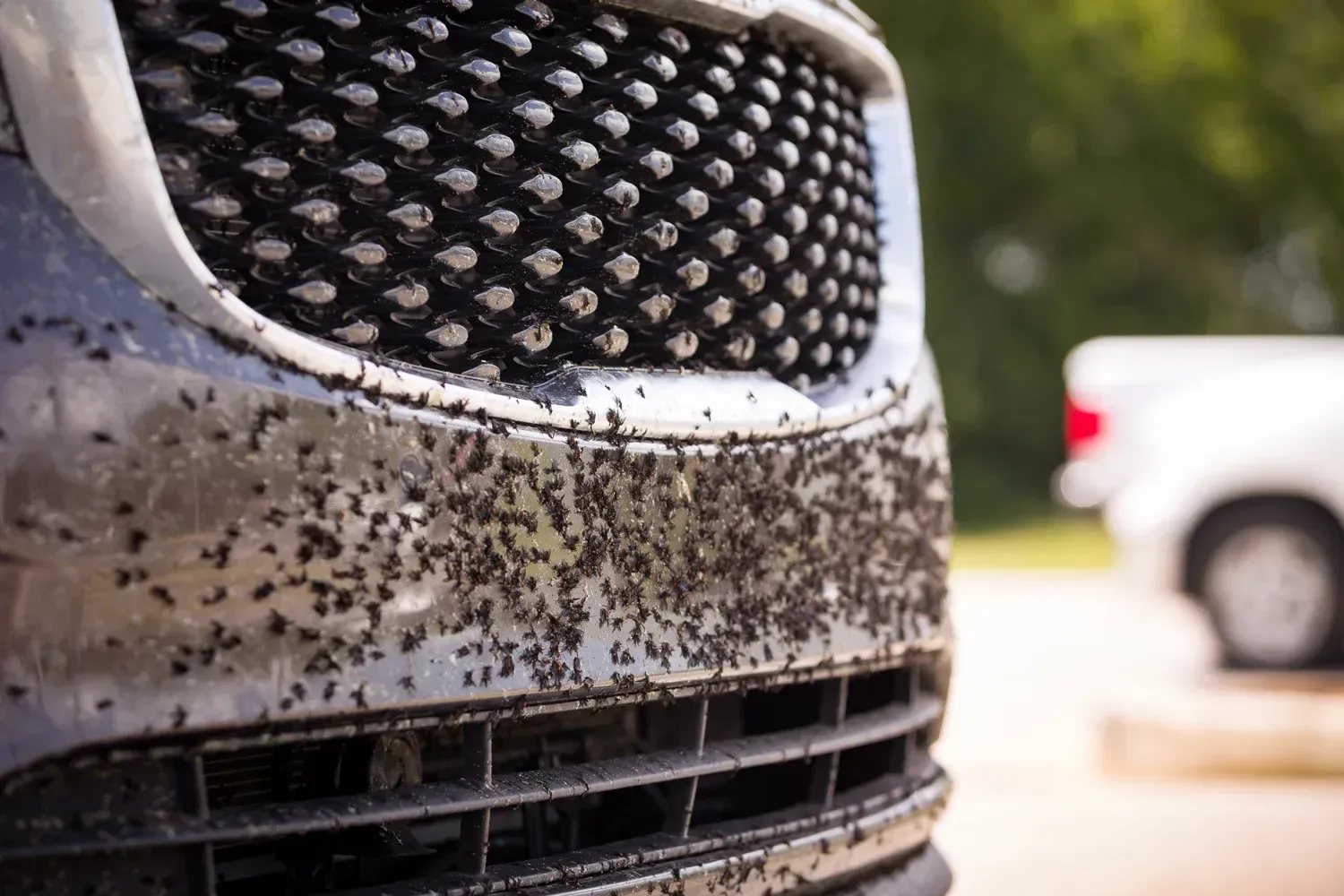Spring's Silent Attack on Your Car's Paint
Spring brings warmer weather and renewed energy, but it also introduces unique challenges for your vehicle's paint. While most car owners focus on winter damage from salt and ice, spring presents its own set of problems that can be just as destructive to your car's finish. The season's combination of tree sap, increased insect activity, and heavy pollen creates a perfect storm of paint damage. These contaminants work differently than winter's harsh but obvious threats - they cause gradual, often invisible damage that compounds over time. Understanding how spring affects your car's paint helps you protect your investment before problems become expensive repairs.

The Triple Threat: Sap, Bugs, and Pollen
Tree sap poses a serious challenge to automotive finishes. This sticky substance doesn't simply rest on your paint surface - it forms chemical bonds with your clear coat. The longer sap remains on your car, the deeper it penetrates into the paint's protective layers.
Sap contains natural acids and resins that begin breaking down clear coat within hours of contact. Warm spring temperatures accelerate this process, essentially baking the sap into your paint. What starts as a minor annoyance can quickly become a permanent blemish requiring professional paint correction to resolve.
Insects create their own unique problems. Bug splatter contains acidic compounds with pH levels that can etch automotive paint. When insects impact your vehicle at driving speeds, these acids get forced into the microscopic pores of your clear coat.
According to automotive research from detailing industry experts, insect remains can cause permanent etching within 48 hours if left untreated. The proteins in bug matter actually form chemical bonds with paint molecules, creating stains that regular washing can't remove.
Pollen presents a more subtle but equally damaging threat. These microscopic particles don't just coat your vehicle - they embed themselves in your paint's surface texture. Each time you wipe away pollen without proper technique, you create tiny scratches. Over time, this accumulated damage gives paint a dull, hazy appearance.
The Environmental Protection Agency monitors pollen levels due to their corrosive properties. These same characteristics that affect human respiratory systems also impact automotive finishes over time.
Why Standard Car Washes Fall Short
Many car owners assume regular washing solves spring contamination problems. Unfortunately, typical car washes often make things worse. Automatic washes use harsh detergents and recycled water that may contain additional contaminants. The rotating brushes can actually grind sap, bug residue, and pollen deeper into your paint while creating new surface scratches.
Professional interior and exterior detailing employs specialized techniques designed for each type of contaminant. Clay bar treatments physically extract embedded particles from paint surfaces. pH-balanced cleaners neutralize acidic residues without compromising your clear coat's integrity.
The difference between amateur cleaning and professional treatment lies in both technique and product selection. Professional detailers understand how different contaminants interact with automotive finishes and choose appropriate removal methods accordingly.
Professional Solutions That Work
Addressing spring paint damage requires understanding what you're dealing with. Professional detailing shops start by assessing contamination types to determine the most effective treatment approach.
Sap removal involves heat application and specialized solvents that break down resin bonds without damaging underlying paint. Bug removal requires enzymatic cleaners that neutralize acidic proteins while preserving clear coat. Pollen extraction uses techniques that prevent particle redistribution across paint surfaces.
However, removal represents only part of the solution. Preventing future spring damage requires protective barriers. Ceramic coating creates a durable layer that shields your paint from contaminants. These coatings form strong molecular bonds with paint surfaces, creating a barrier that resists organic acids and environmental damage.
For maximum protection, paint protection film provides physical shielding against impact damage while maintaining visual clarity. PPF absorbs energy from debris impacts and offers a replaceable protective surface.
The Real Cost of Delayed Action
Paint damage accumulates gradually, often becoming noticeable only after reaching advanced stages. By the time visual signs appear, simple cleaning no longer resolves the problem. At this point, you're facing paint correction work, possible panel refinishing, or complete repainting.
Professional detailing costs significantly less than paint restoration services. More importantly, preventive care maintains your vehicle's appearance and resale value over time.
Spring weather patterns in the Fraser Valley create ideal conditions for the contamination issues discussed above. Tree sap production peaks during warm days, insect activity increases with temperature, and local vegetation produces substantial pollen loads.
Regular professional maintenance during spring months protects your investment and keeps your vehicle looking its best. Rather than waiting for damage to accumulate, proactive care addresses problems while they remain manageable.
Your car faces constant exposure to environmental contaminants throughout spring. Professional detailing gives your vehicle's finish the protection it needs to withstand seasonal challenges while maintaining its appearance and value.
How Diamond Shine Protects Your Investment
- Contamination-specific removal techniques that address sap, bug residue, and pollen without creating additional damage
- Professional-grade ceramic coatings that provide long-term chemical resistance and UV protection
- Paint protection film installation for high-impact areas prone to spring damage
- Maintenance programs designed around seasonal challenges specific to the Fraser Valley climate
- Paint correction services to restore surfaces already compromised by spring contaminants
Diamond Shine Detail understands spring's specific challenges because they see the results every day. Cars that receive regular professional attention maintain their showroom appearance for years. Vehicles that rely on quick washes and hope slowly lose their luster, their value, and eventually require expensive restoration work.

